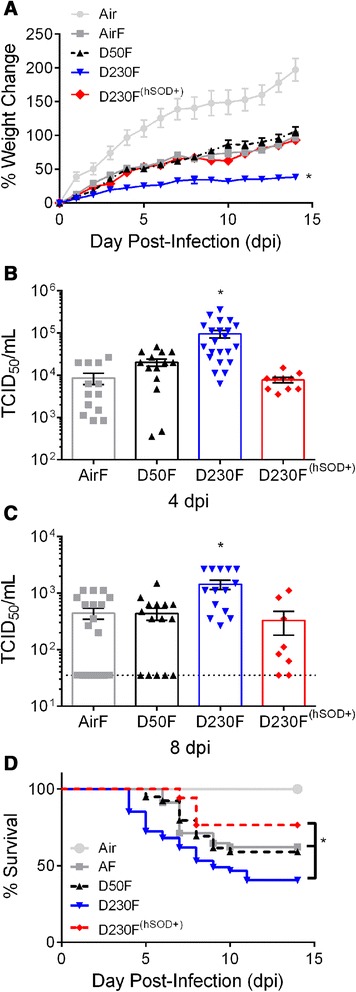Figure 2.

Effect of EPFR exposure on influenza morbidity and viral load in neonates. Neonatal mice were exposed to air, DCB50, or DCB230 and infected i.n. with influenza (AirF, D50F, D230F, D230F(hSOD+)) at 1.25 TCID50/neonate or sham infected with DPBS (Air). (A) Average percent change in weight plotted against dpi. N =16-35/group. (B) Peak pulmonary viral load assessed at four dpi. N =10-22/group. (C) Pulmonary viral clearance assessed at eight dpi. Dotted line indicates limit of detection (35 TCID50/mL) of assay. (D) Effect of EPFR exposure on influenza infection associated drop in survival in neonates. Survival was recorded daily until 14 dpi. N =8-18/group. Data plotted as mean ± SEM. *p <0.05 D230F vs Air, AirF, D50F, and D230F(hSOD+). (A) Multiple t tests with Holm-Sidak correction for multiple comparisons. (B and C) One-way ANOVA with Tukey’s multiple comparisons test. (D) Gehan-Breslow Wilcoxon test with Bonferroni correction for multiple comparisons; *p <0.014 between D230F vs AirF and D230F(hSOD+). N =17-47/group.
